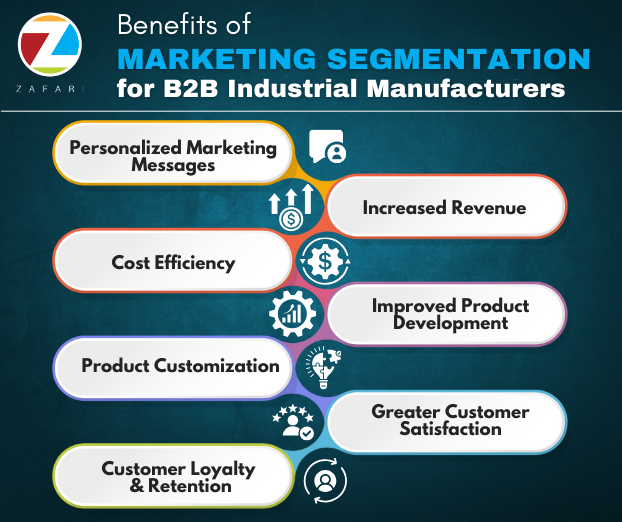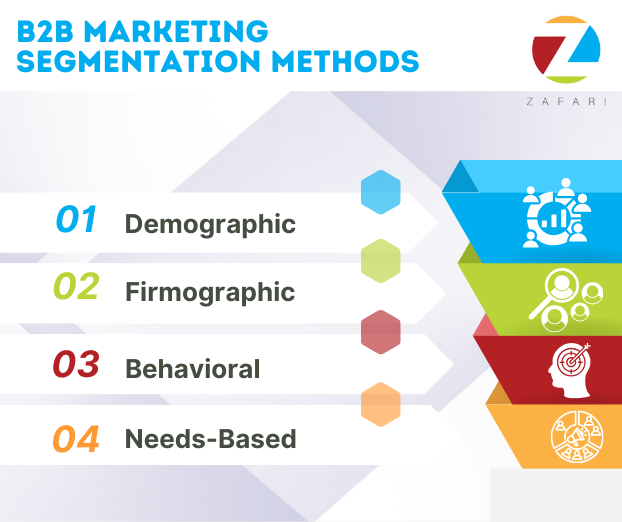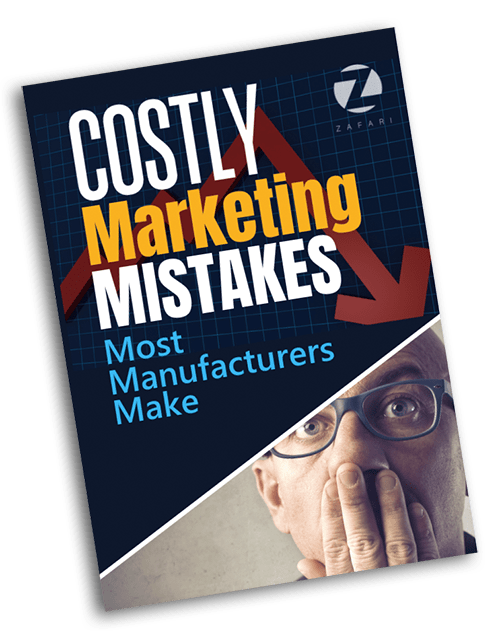The inbox of your prospects is likely flooded with unwanted advertisements, announcements, and countless “offers” from a wide variety of businesses.
But as you already know, these generic, one-size-fits-all messages often fail to catch their attention because they aren’t personalized and relevant.
In this age of information overload, the only unsolicited messages anyone is going to pay attention to are those that are tailored specifically for them. In industry terms, this is known as personalization.
An effective marketing message evokes a response such as “Yes! This is exactly what I need!”
How can YOU create an effective marketing message to elicit a response like this?
This is where marketing segmentation comes into play.
Market segmentation—identifying distinct groups within your target audience—allows you to send more relevant and customized messages. As a result, it boosts sales and customer retention.
In this guide, we will learn about market segmentation and how to implement it for your B2B company. Let’s get started!
What is Marketing Segmentation?
Market segmentation is a strategy where you identify specific groups within your target audience who share similar characteristics.
Simply put, it is the technique of dividing an audience into smaller groups based on shared traits and attributes, such as age, income, geography, needs, wants, behaviors, and values.
It helps you understand the diverse preferences and needs of each consumer group and then craft targeted marketing strategies to cater to each segment effectively.
This process creates meaningful subgroups of both current and potential customers for your brand.
Let’s look at an example,
Imagine a manufacturer of paper-cutting machines tailoring their products and marketing strategies to meet the specific needs of different customer groups:
Firstly, they segment their customers into industries such as printing presses, packaging companies, and educational institutions. For small businesses, they offer compact and affordable machines, while large-scale operations can benefit from heavy-duty, high-capacity models.
Next, they customize machines for various regions, considering factors like voltage requirements, space limitations, and local market preferences. They also develop specialized features such as automated cutting systems for precision, safety mechanisms for educational settings, and eco-friendly options for environmentally conscious customers.
To appeal to each target audience effectively, they emphasize the unique benefits of their offerings.
Understanding the Differences between B2B and B2C Marketing Segmentation
- In B2B, decisions involve multiple stakeholders within organizations, unlike in B2C where individuals or families make decisions.
- B2B products and services are complex, requiring thorough evaluation and rational decision-making, contrasting with the often impulsive purchases in B2C.
- B2B transactions are long-term investments focused on value and risk management.
- B2B companies also focus on fewer, high-value clients, emphasizing personalized relationships to foster long-term partnerships.
(Related: The Foundation of B2B Industrial Marketing)
What are the Benefits of Marketing Segmentation for a B2B Industrial Manufacturer?

Personalized Marketing Messages
Personalization is a cornerstone of effective B2B marketing. Tailoring your messages to resonate with the specific needs and interests of different customer segments can significantly impact your business outcomes.
Real World Example: ArborGen a forestry seedling company that has achieved outstanding results with targeted marketing messages personalized to each of their target audience segments. For example, their target audience includes both new landowners and experienced forestry consultants for whom uniquely relevant messages have been crafted. Check out the entire success story here.
Increased Revenue:
One of the primary benefits of personalized marketing messages is their ability to increase revenue. Sales teams can efficiently allocate their resources and efforts by focusing on the segments that have the highest conversion rates. This focused strategy reduces the sales cycle and raises conversion rates, which eventually results in increased revenue creation.
Cost Efficiency:
With market segmentation, you can allocate your market budget more strategically. It helps you identify the most lucrative segments to invest in. This way, you can reduce wasteful expenditure on less productive areas.
This strategic allocation of resources lowers the overall cost of marketing and sales initiatives while maximizing return on investment.
Improved Product Development
One of the key benefits of customer segmentation is to know the diverse needs and preferences of your customers. You can put those insights to create and develop products that can be more aligned with market demands.
Enhanced Product Customization:
Understanding the unique requirements of each customer segment allows businesses to customize their products and services accordingly. In market segmentation, you tailor offerings to unique concerns and preferences. This leads to compelling and competitive solutions resonating with your target audience.
Greater Customer Satisfaction:
By creating tailored products or services to your customers’ concerns, you deliver an outstanding personalized experience. This tailored approach enhances brand engagement, fosters stronger customer relationships, and increases overall satisfaction and loyalty.
Customer Loyalty and Retention
Tailored solutions and ongoing support based on customer insights contribute to long-term relationships and reduce churn rates.
(Our Manufacturer’s Marketing Framework utilizes market segmentation as a key aspect to bring exceptional results for our industrial clients. Learn more about it here.)
B2B Marketing Segmentation Methods
Demographic Segmentation:
In demographic segmentation, you categorize customers based on their unique demographic traits such as gender, age, income, job title, and education level. It helps you understand the basic characteristics of your target audience.
However, demographic segmentation can be different for B2C and B2B firms.
Unlike B2C companies, which often focus on individual consumers with considerations like gender or race, B2B organizations primarily engage with other businesses.
Instead of relying on geography, gender, education level, and income, B2B marketing focuses on industry location, number of employees, and revenue.
Firmographic Segmentation
Firmographic segmentation focuses on characteristics specific to the business or organization, including company size, industry, location, and organizational structure. Firmographic data helps B2B firms identify businesses that are likely to look for their products and services.
Behavioral Segmentation
In behavioral segmentation, you divide your audience based on their purchasing behavior based on factors like order size, loyalty status, purchase frequency, and engagement with the brand.
With this segmentation in place, you can understand how customers with your products or services. It can lead to repeat sales and improve customer loyalty.
Needs-Based Segmentation
Needs-based segmentation categorizes customers based on their specific needs, challenges, or pain points that a product or service can address. This approach allows companies to align their offerings with customer needs more effectively and position themselves as solution providers.
How to Do B2B Marketing Segmentation
- Gather comprehensive data about your existing customers, including firmographic details, behavioral insights, and specific challenges or needs they face.
- Divide your marketing based on industry type, size, location, pain points, and well as purchasing behavior.
- Develop detailed customer personas that reflect typical customers within each segment, incorporating demographic details, motivations, challenges, and preferred communication channels.
- Create personalized marketing messages that resonate with each segment’s requirements.
- Implement targeted marketing campaigns tailored to each segment, closely monitoring performance to make necessary adjustments.
- Track key metrics like conversion rates and customer retention to identify profitable segments and optimize marketing strategies.
Final Thoughts
Segmentation is a vital initial stage in marketing that focuses on identifying and grouping customers based on shared needs.
By understanding where, what, who, and why (the benefit or need), businesses can effectively target specific customer groups. This allows them to set clear marketing goals for each segment and develop strategies using product offerings, pricing, promotion tactics, and distribution channels tailored to meet those objectives.
To know more about marketing segmentation for your B2B venture, get in touch with our marketing experts at Zafari. Schedule a Free Strategy Call now!






